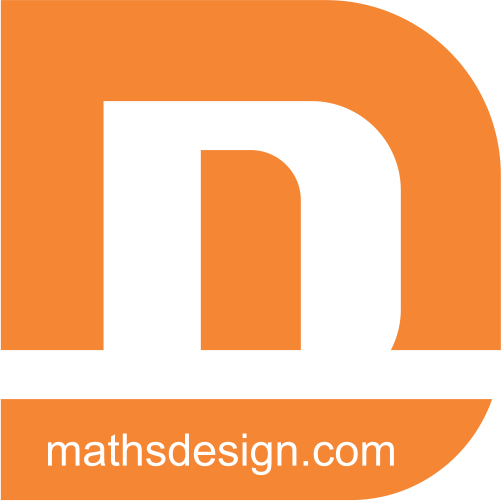Math Symbols
Maths Symbols List
-
Origin of some mathematical symbols
-
Basic maths symbols
-
Number symbols
-
Roman numerals
-
Greek symbols
-
Logic symbols
-
Algebra symbols
-
Linear Algebra Symbols
-
Geometry symbols
-
Set theory symbols
-
Calculus & analysis symbols
-
Probability & statistics symbols
-
Combinatorics Symbols
Math symbols represent quantities and operations. For example, the plus sign (+) represents an addition, while the minus sign (-) denotes subtraction. The multiplication sign (x) indicates multiplication, and the division sign (÷) denotes division. Additionally, the equals sign (=) shows equality between two expressions. Symbols also represent variables, such as x and y, as well as constants, such as pi (π). Other symbols, such as the infinity sign (∞), represent concepts or ideas that are impossible to graphically represent. Symbols essential part of mathematics and help us understand and communicate mathematical concepts.
Symbols can be combined to form equations, which can be used to solve problems. And also help to convey abstract concepts that may be difficult to express in words, such as infinity (∞), or the concept of nothingness (ø). It is used to represent entire fields of mathematics, such as set theory (⋃). Symbols, therefore, serve as a powerful tool for expressing and manipulating mathematical ideas.
I will explain the meanings of three mathematical symbols:
The plus (+) sign, the minus (-) sign, and the equal (=) sign.
The plus (+) sign stands for addition. It indicates that two or more numbers should be added together.
For example, the equation 2 + 3 = 5 indicates that 2 and 3 should be added together to get the sum of 5.
The minus (-) sign stands for subtraction. It indicates that one number should be subtracted from another.
For example, the equation 5 – 2 = 3 indicates that 2 should be subtracted from 5 to get the result of 3.
The equal (=) sign stands for equality. It indicates that two numbers are equal to each other.
For example, the equation 6 = 6 indicates that 6 is equal to 6.
These three mathematical symbols perform basic mathematical operations. By understanding their meanings, it is possible to understand the fundamentals of mathematics.
Here’s a list of various math symbols used across different branches of mathematics:
-
Arithmetic Operations:
- “+” : Addition
- “-“: Subtraction
- “*” or “×” : Multiplication
- “/” or “÷”: Division
- “%”: Modulo (remainder of division)
- “=” : Equality
-
Algebraic Operations:
- “^” or “ⁿ” : Exponentiation (e.g., x^2 means x raised to the power of 2)
- “√” : Square Root (e.g., √x represents the square root of x)
- “∛” : Cube Root (e.g., ∛x represents the cube root of x)
- “!”: Factorial (e.g., n! represents the factorial of n)
-
Relations and Logic:
- “<“: Less than
- “>”: Greater than
- “≤”: Less than or equal to
- “≥”: Greater than or equal to
- “≠” or “!=” : Not equal to
- “∝”: Proportional to
- “∴”: Therefore
- “∵”: Because
- “∈” : Element of (e.g., x ∈ A means x is an element of set A)
- “∉” : Not an element of (e.g., x ∉ A means x is not an element of set A)
- “⊂”: Proper subset of
- “⊆”: Subset of
-
Calculus and Analysis:
- “∫” : Integral symbol (e.g., ∫ f(x) dx represents the indefinite integral of f(x) with respect to x)
- “d/dx” : Derivative with respect to x (e.g., d/dx f(x) represents the derivative of f(x) with respect to x)
- “∂/∂x” : Partial derivative with respect to x (used in multivariable calculus)
- “lim” : Limit (e.g., Lim(x → a) f(x) represents the limit of f(x) as x approaches a)
-
Sets and Set Theory:
- “∪”: Union (e.g., A ∪ B represents the union of sets A and B)
- “∩”: Intersection (e.g., A ∩ B represents the intersection of sets A and B)
- “∖”: Set Difference (e.g., A ∖ B represents the elements in A that are not in B)
-
Geometry and Trigonometry:
- “∠”: Angle
- “°”: Degree
- “π”: Pi (approximately 3.14159…)
- “sin”, “cos”, “tan”: Trigonometric functions
-
Probability and Statistics:
- “P”: Probability
- “μ”: Mean (average)
- “σ”: Standard deviation
- “Σ”: Summation (used for sums in statistics)
-
Logic and Sets:
- “∨”: Logical OR (disjunction)
- “∧”: Logical AND (conjunction)
- “¬”: Logical NOT (negation)
- “⇒”: Logical implication (implies)
- “⇔”: Logical equivalence (if and only if)
These are some of the commonly used math symbols in various mathematical fields. Each symbol plays a crucial role in representing mathematical concepts and relationships.

Recent Comments